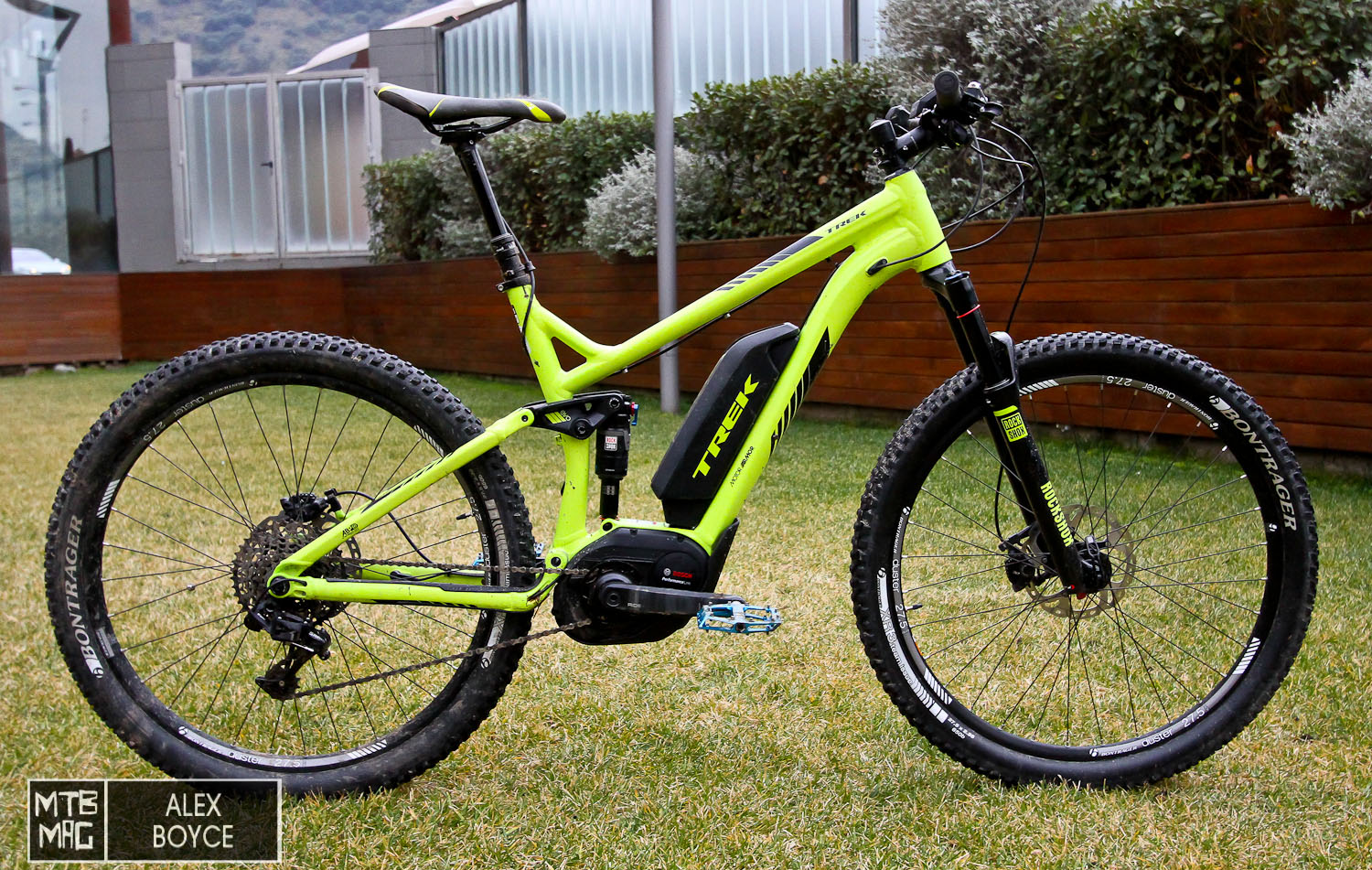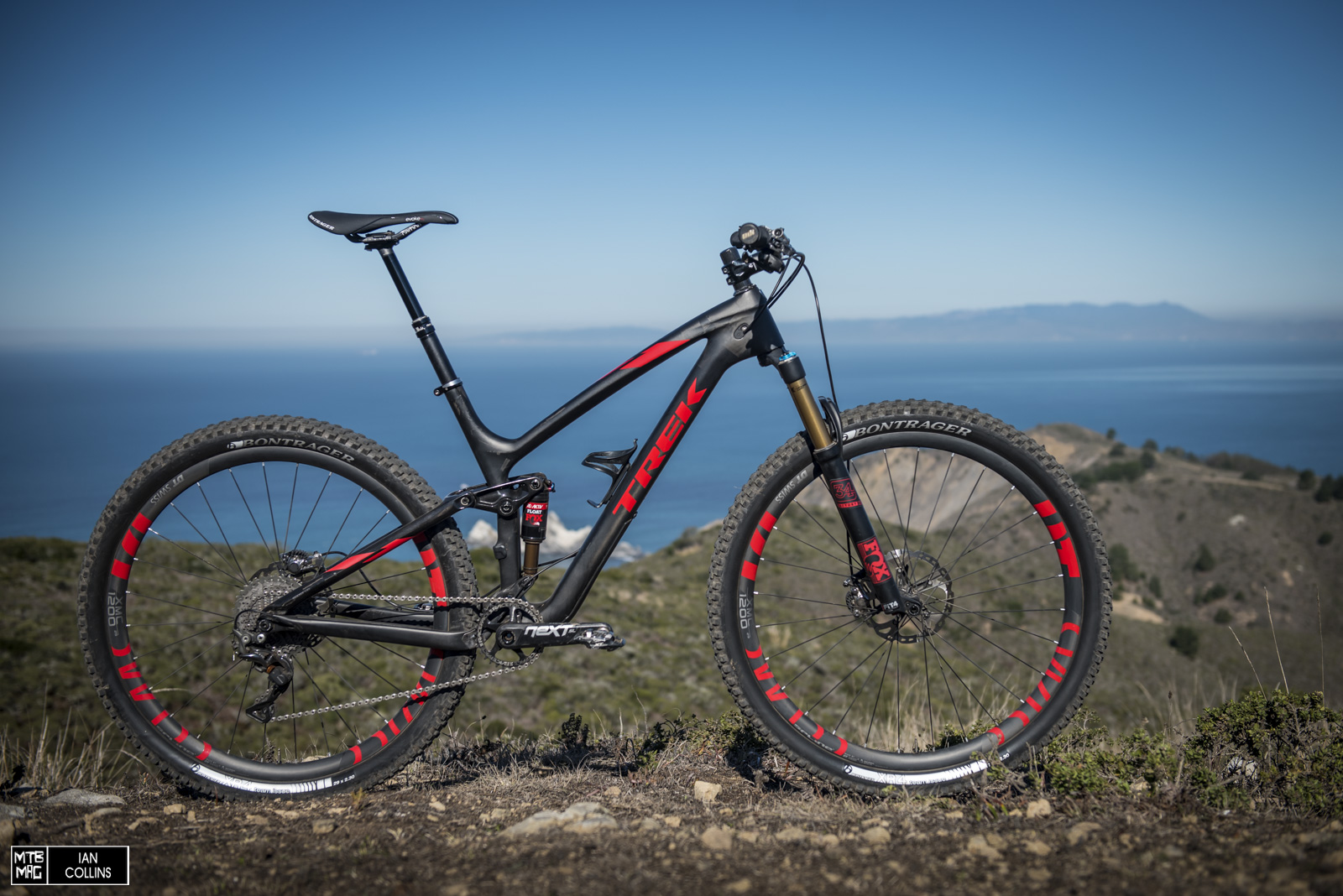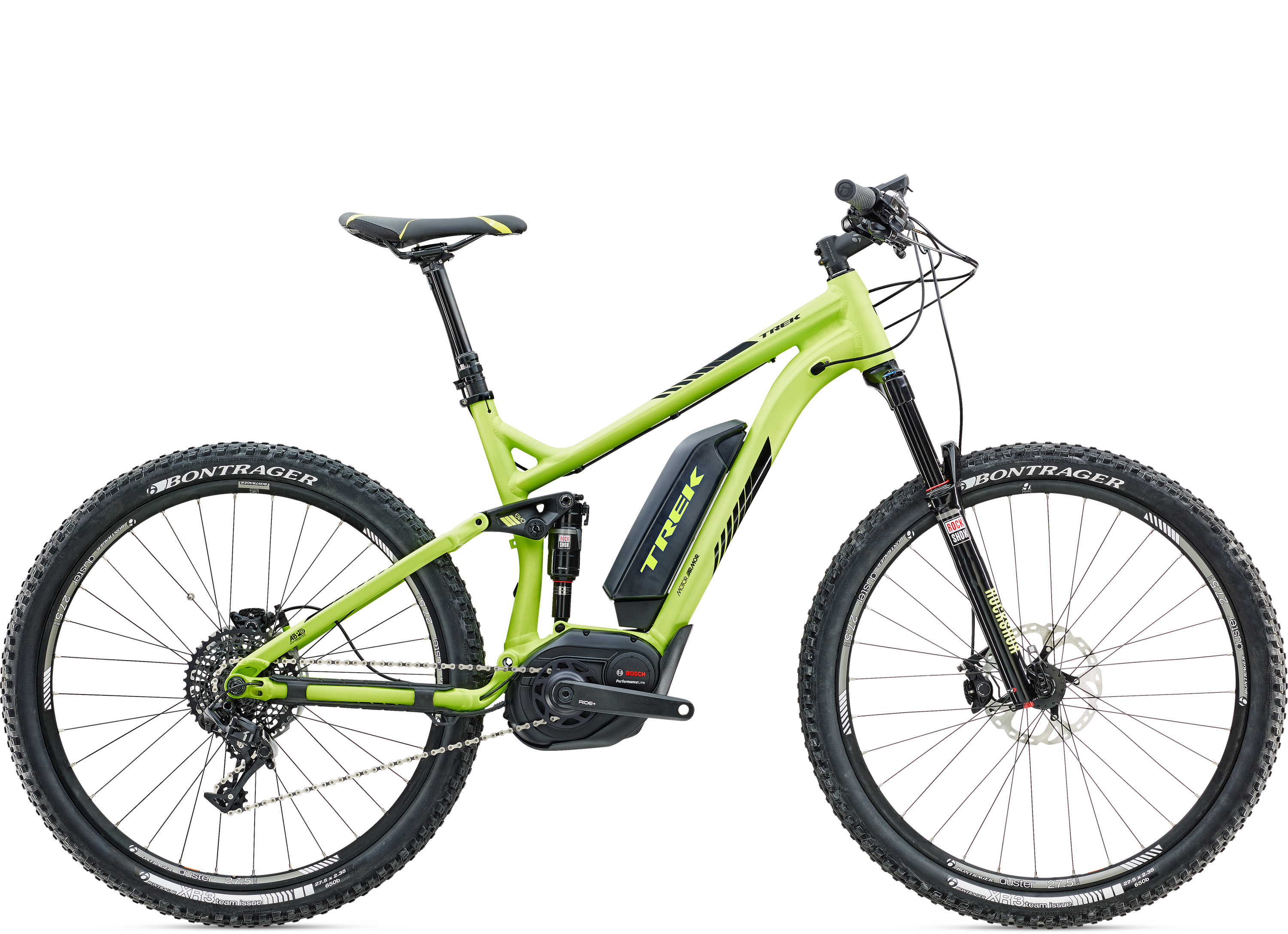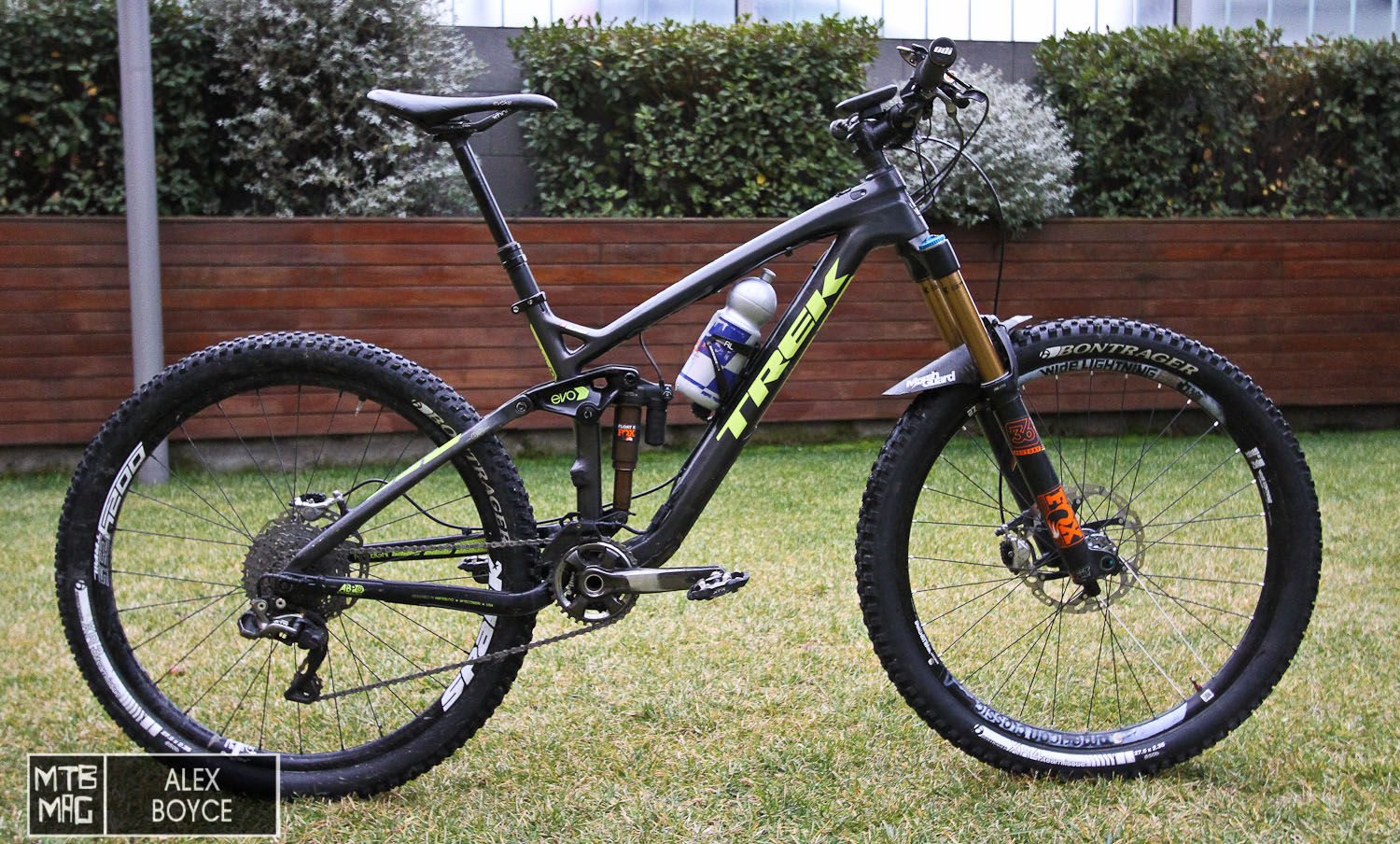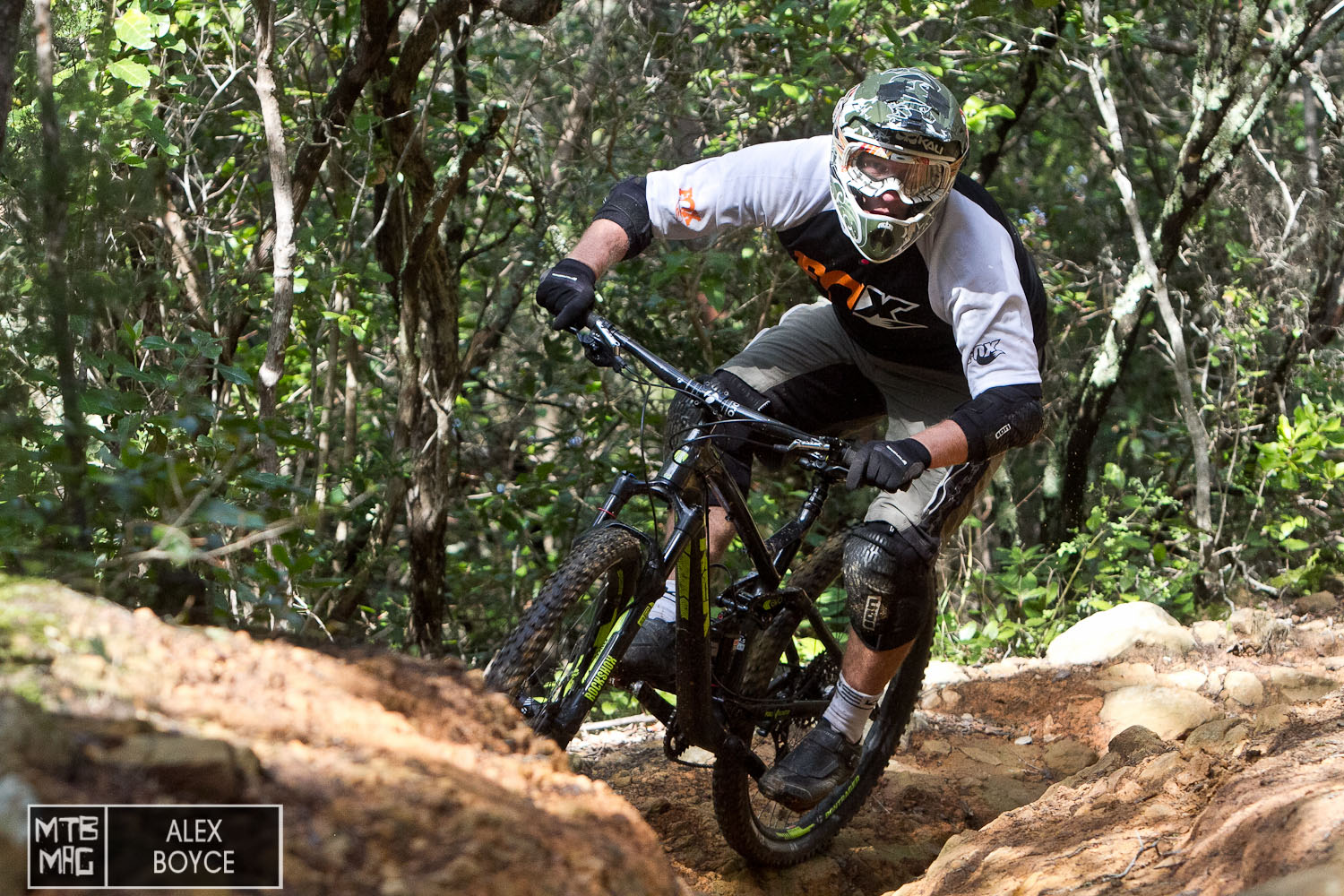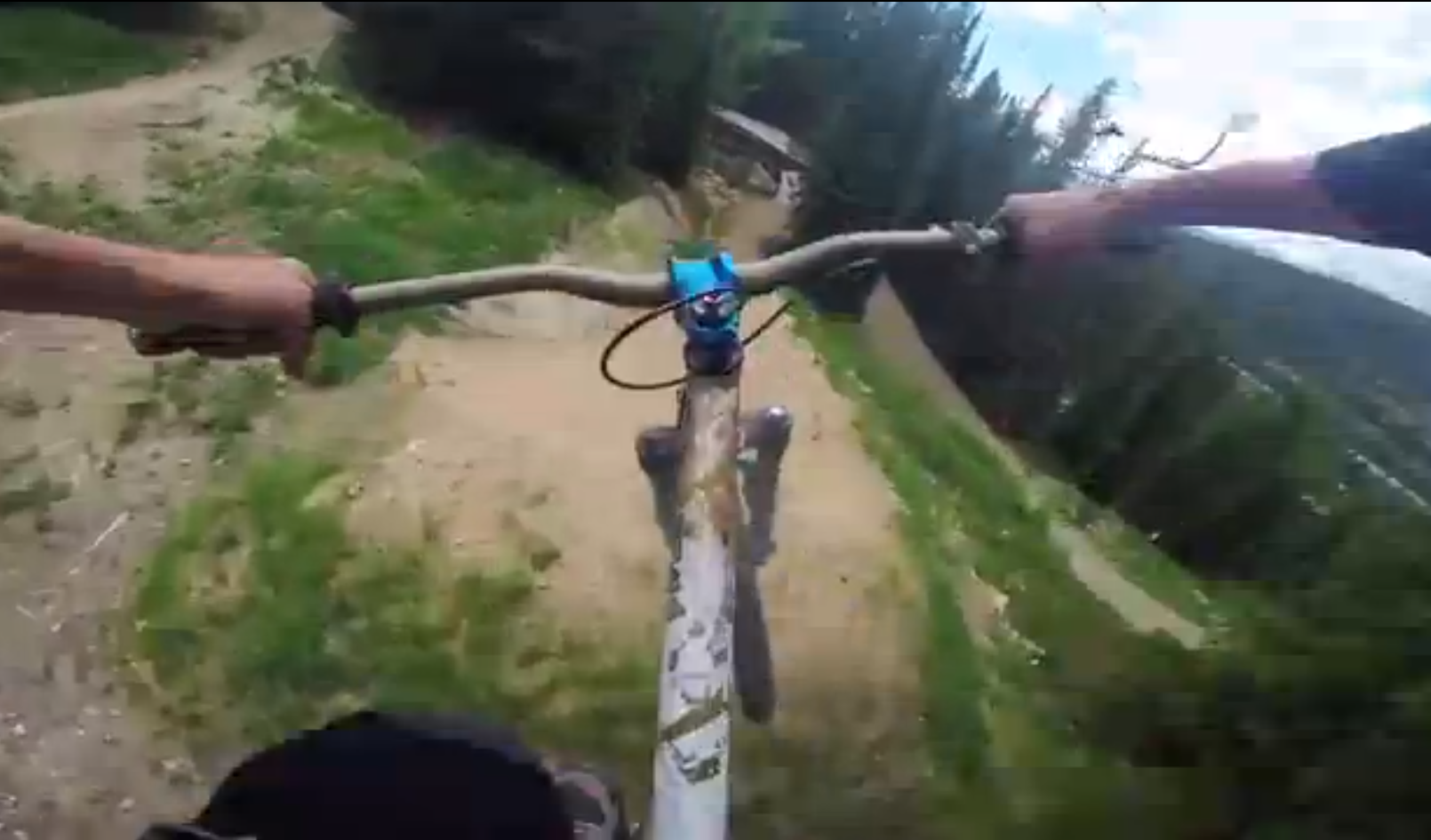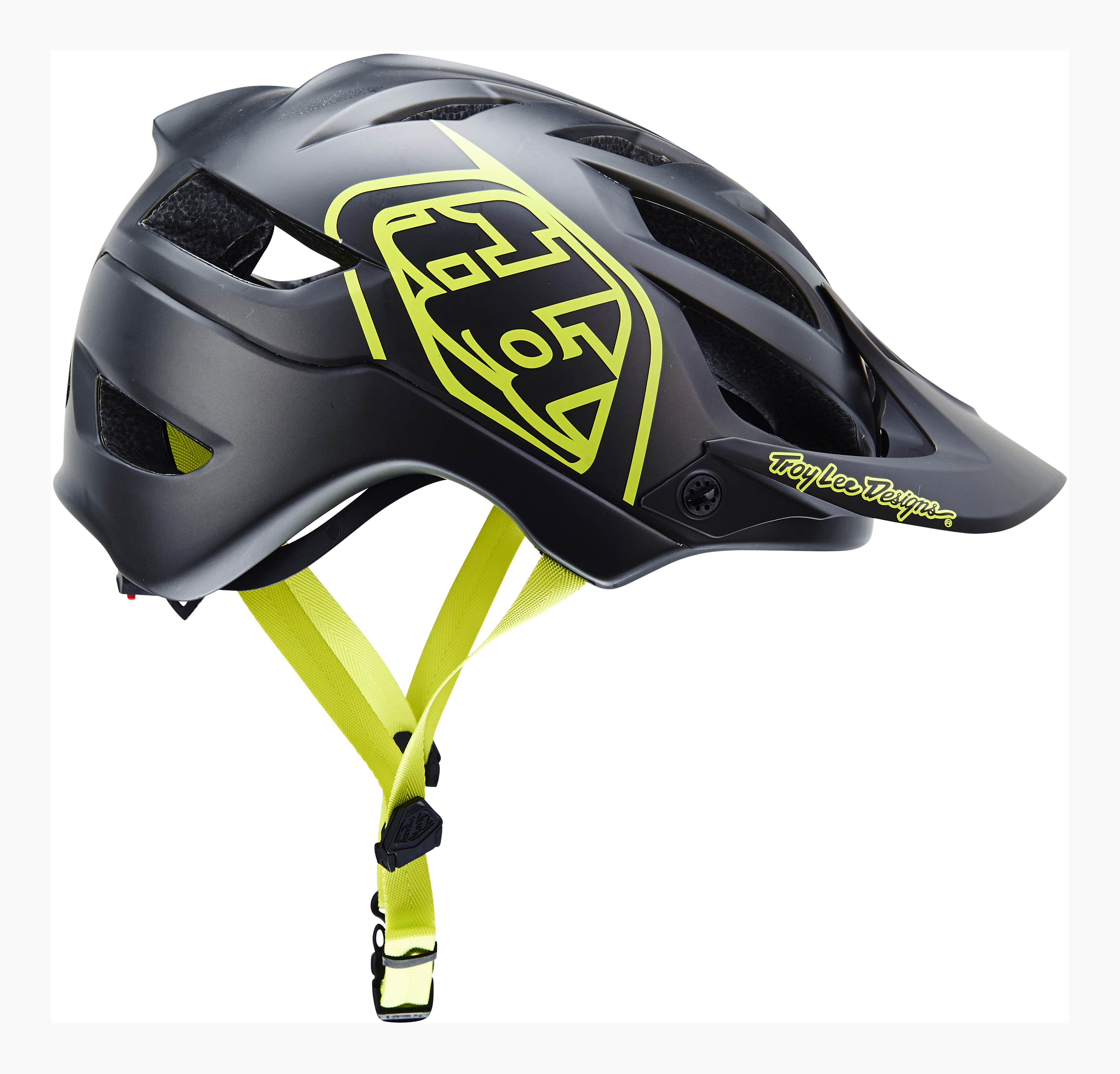Trek, as one of the largest bicycle companies in the world, have been standing on the sidelines for the last few years watching what has been happening in the Ebike market and patiently researching step by step how they might enter the market. When they finally did, this is what they came up with, the Powerfly FS9. We were invited to try the top of the range model and Trek were keen for us to get a good long ride (49km) on it and form some opinions.
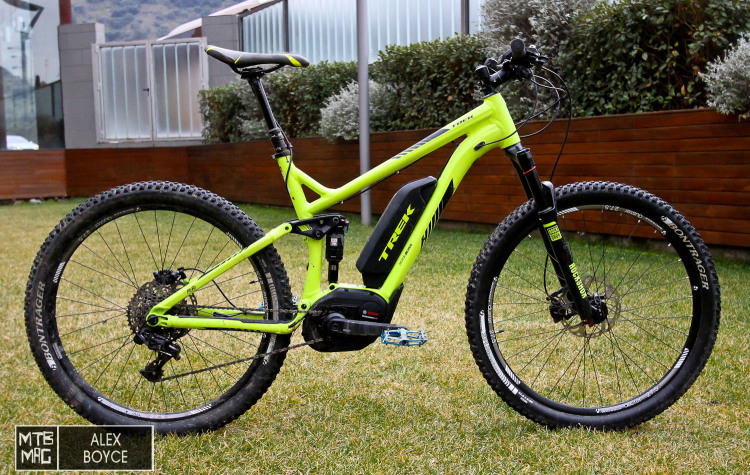
Specifications
Please read our previous introductory article for full details.
Set Up
This occurred like any bike test would normally commence, just because it was an Ebike didn’t mean we had to do anything differently. We were given a range of stem options, and we could adjust the brakes and controls as we wanted. It was pretty easy to set up especially when your mechanic is Rene Wildhaber!
Rene set about making sure the bike was perfect to ride and ensured his adjustment experience was passed on. We set all things as we normally would on our own non Ebikes, including the suspension which we set at 30 percent sag, no special settings necessary.
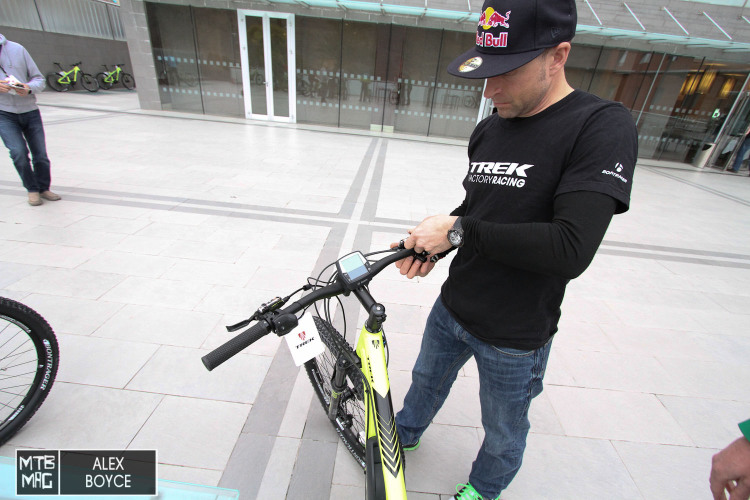
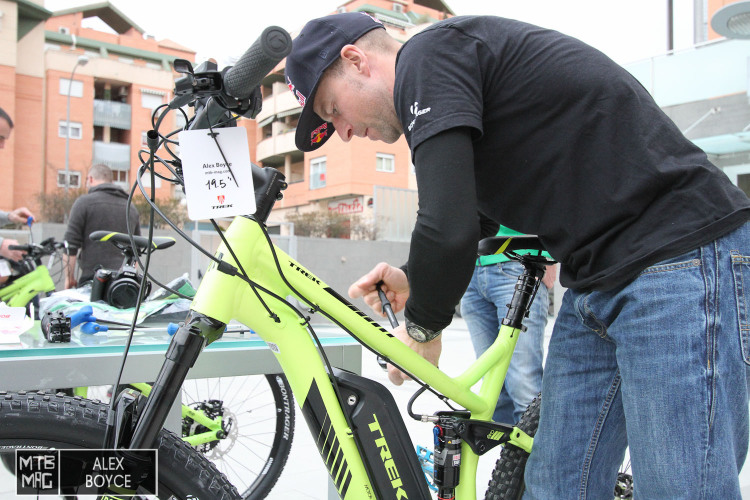
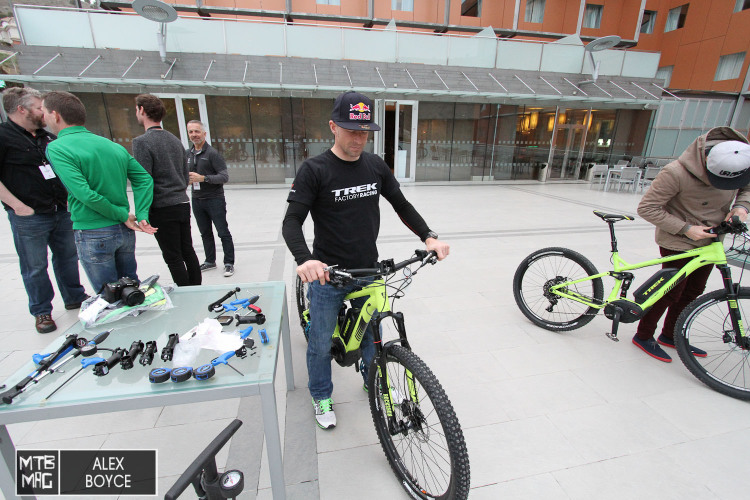
Frame/Adjustments
We chose a large size frame (19.5″) and ran a 60 mm stem with a supplied 740mm bar. This size seemed to be ideal for our 183 cm height and 90 kilo weight. The stem was swapped to a size that bought us a little more up right in the pedal position and ensured correct feeling for us when we were riding. We went for a low stack with only one 5 mm spacer under the stem, again keeping our centre of gravity low and planted over the front wheel. With five sizes to choose from we felt we could have probably gone one size larger and been ok as well, but we would have gone to a 50 mm stem. Our body position on the bike felt like a normal trail bike with no surprises or anything out of the ordinary being noted.
Drive System Experience
Comprising the battery, gears and motor we felt that we had no particular say in what can be adjusted the only thing we can do to influence drive was select power mode and gears when riding.
We were not able to decide the front chain ring size and we found the SRAM X1 10-42T cassette a really great choice. The wide range cassette seemed to be really at home on the Ebike, more so than a normally found 11-36T. We always felt we had the perfect gear available in all situations that we encountered. We pushed the system hard and sometimes made dodgy (grinding) gear changes under power and at no point did we find ourselves with a problem, the gears remained in adjustment and never jumped once.
With an Ebike we discovered we were aiming for maximum fun in our case. A correct use of power with the right gear meant we could pedal up anything, we used the Turbo mode a lot falling back on the sport mode frequently, despite it eats more juice, as we assumed that is what most people want to do, have fun. Plus we wanted to see in real world situations how long the battery would really last if we did not try to overtly conserve it. Of the 48km ride we made it 30 KM around the loop before we lost all power, luckily we were 100 metres from the rest stop so we just rolled in and swapped the battery to a back up supplied by Trek. Other riders in our group who were being more liberal with their use of the power still had half their charge remaining. Add in that we weigh 90 kilos and all in all we thought we hadn’t done badly with the range, which was constantly updated on our display. When talking to Trek about how far people actually ride with these things in real world situations that they have tested and observed, their response was around 15km. This is well short of the 30 km we did, covering about 1200 metres of climbing in the cold of the Sierra Nevada mountain range, where batteries are actually not very efficient in theory due to temperature effects.
The motor on our test was the more powerful option from Trek and gave us a smooth power output when we pedalled. If we ventured over 25km/h it cut out, which to be honest we didn’t really notice significantly as in those situations we were generally riding fast downhill and watching the trail rather than worrying about what the motor was doing. The power up take was always smooth, no sudden jolts or splurges. When riding up hills we never felt when in first gear the bike ran out of power even in tour mode. Traction was always lost before the bike’s power output stopped. Which was impressive. Also power output was constant until the end when we discharge the battery, no gradual slow down.
We felt that in some situations with the motor putting extra power into the riding equation, we did have to adapt our riding style somewhat in steeper climbing technical sections, but nothing a few moments of thought could not get to grips with, in the end we had a smooth riding style balanced by the motor’s inputs and our control of the gears.
The power output of the bike had five modes which were controlled by the power switch on the left bar. Turbo, Sport, Tour, Eco, and Off. We used Turbo and Sport mostly, dropping into tour mode when the going was easy. We stayed away from eco mode. When we switched the power off, the bike definitely felt heavy trying to pedal uphill.
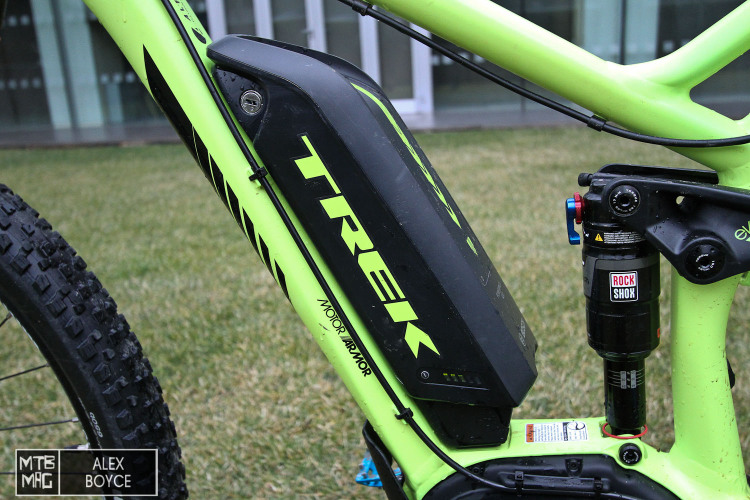
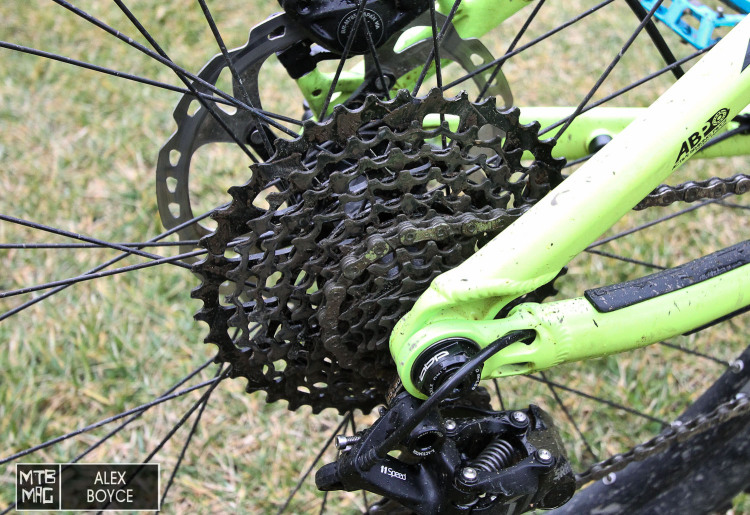
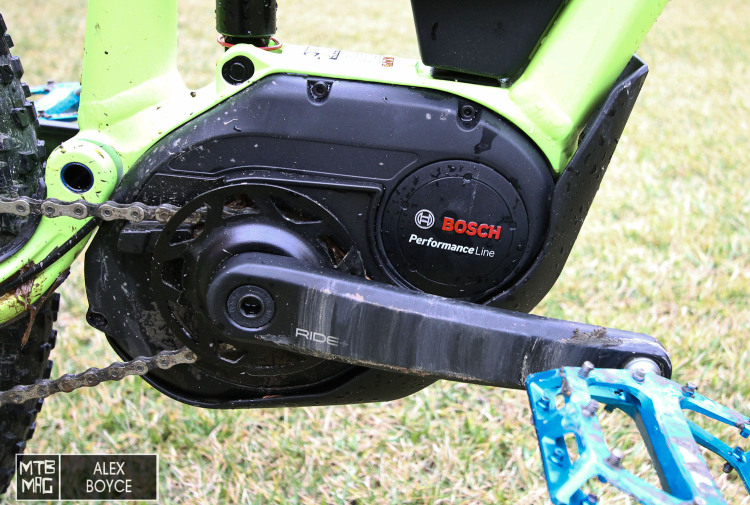
Suspension
We set up the system with a nominal 30 percent of sag. This meant 140 PSI in the Revelation 120mm fork. The Monarch shock we tuned once but we set it a bit hard initially and we bled air out later. Together they both felt very supple and progressive. We did not manage to bottom them out on our ride, without hitting anything big, despite the weight of the bike. We found the frame to be very stiff and thus we felt that time should be taken to get the suspension perfectly set up as there was no give in the frame.
Honestly with the Ebike system between us and the drive wheel and this being one of our first times on this bike, we could not feel significantly what was going on behind us precisely. In such a short time discovering how power was delivered to the rear wheel and understanding it was difficult, all we knew is that the ride was smooth and the rear wheel seemed to be gripping well and seldom lost traction, meaning simply the rear suspension was doing it’s job. We did a few drops at times and combined with the downhill sections, we found that the bike definitely floated over the ground well, we were actually impressed with the fact how stable the suspension system worked when at speed, no nervousness or top heavy feelings. We did not once touch the lockout controls as with the bike constantly giving us power when needed we essentially forgot about them, as the motor made up for our short comings as a rider.
Uphill or downhill the bike tracked well, was spritely in corners with the short rear stays and remained constantly in contact behind with the drive wheel. The fairly open fork geometry for a bike like this of 68 degrees was acceptable for most of what we threw at it. There was only one point on our ride when we felt that our skills as a rider took over, as we had reached the limit of the travel of the bike, but this was a place most people who buy this bike wont probably be going to intentionally. However with the extra weight we felt it gave stability to the system when we did tackle it.
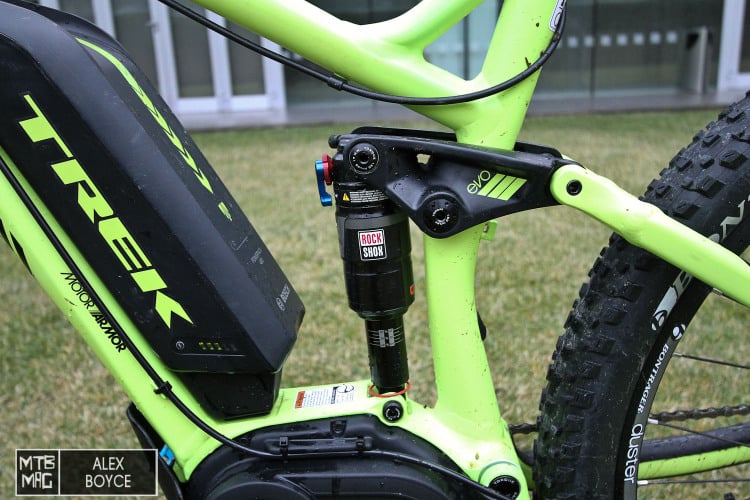
Brakes
With Shimano XT brakes providing the stopping force, despite the extra weight we felt no short comings in being able to stop. With 180mm ice tech discs front and rear, we just used the brakes and forgot about them, they did what we wanted well, even with extra weight behind them. We liked the fact that the brakes did not noticeably interfere with the motor power output, cutting it out. We could dab at the brakes with no harsh interruption to the flow of the bike on the trail. The choice of these brakes gave that extra polish to the bike and made the rider feel that nothing had been skimped on.
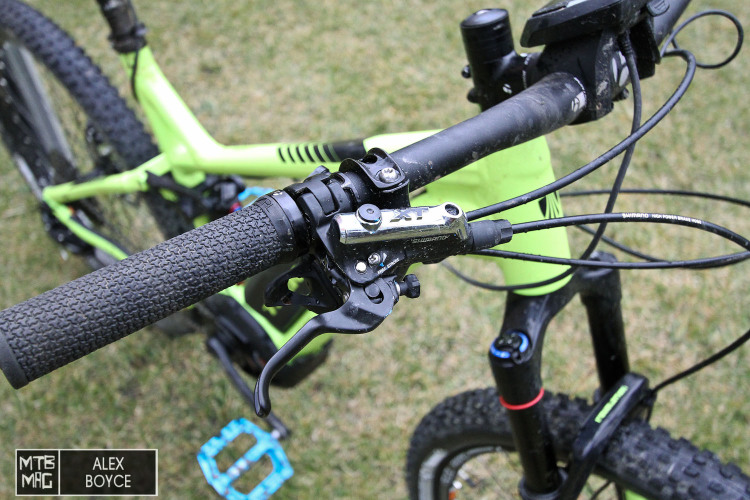
On The Trail
Finally we get to the ride part of our test. We should say that we felt it was incredibly hard to judge this bike against what we normally ride. We don’t think it would be completely fair to put it up against a normal trail bike and say it was good or bad. What we have here is essentially a new category of bike. We have ridden other Ebikes in the last few years so we can comment on how it rode compared to those. We can also comment on the fact that no special skills are needed to ride it, in fact in some instances it is actually easier to ride compared to a normal bike. So before we say how it was to ride we have tried to come up with the kind of person that this bike is aimed at. Trek suggests based on their research that Ebikes can help get people into the sport, this we agree with. They also talked about how the social element of riding in groups with different fitness of riders can be evened out. We again agree completely with these judgements about the type of rider who might go for this bike.
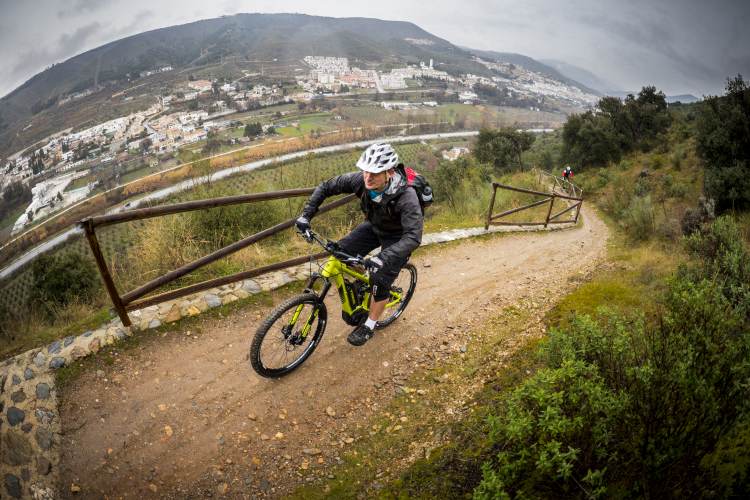
With all these thoughts in mind we decided to look at the test of the bike in terms of advantages of the Ebike system and how they affected our ride. This became apparent as we rode straight out of the hotel where we were based to a 400 metre steep climb. We selected first gear, turbo mode and rode up it without even really noticing we had just done it. The motor made short work of the climb and if we had been riding a normal bike we think we would have made it 1/3rd of the way up before we would have given up and started walking. The Trek though flew up it and left us feeling like we had almost cheated… how was that possible? Nothing short of an impressive introduction. When climbing steeply the bike was stable and the front end remained on the ground, if we had traction then we moved forward.
Further into the ride we came to a very long gentle muddy climb, that if we had been on a normal bike, would have sapped our energy as the rear wheel slipped a lot. Not a problem for the motorised bike, again we made short work of the climb. We basically again and again proved on each climb that having assistance was golden. It made our ride fun.
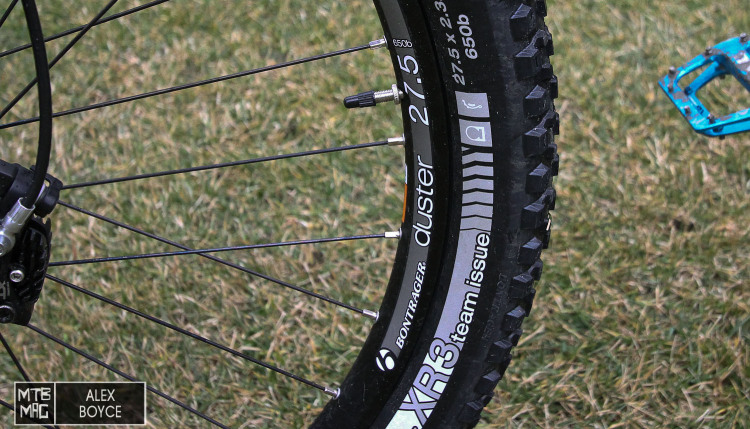
The whole idea in our minds of biking is that we ride up to go down, this is where the extra weight of the bike can be felt. However for the type of rider that is likely to buy this bike, the extra weight probably will actually be an advantage. Trek spent a lot of time making sure that the centre of gravity was as low as possible. This meant that in descents the bike felt stable and planted. Definitely confidence inspiring. We have tried other Ebikes with the same amount of travel that due to a shorter wheel base and higher feeling centre of gravity actually resulted in us loosing the other bike down a ravine as it slipped away beneath us when we lost our balance way too easily on a narrow trail. That lesson was in our minds, at no point with the Trek did we feel this, the work that the designers have done on the geometry had paid off. We felt stable and in control at all times, yes the bike is harder to flick around when descending due to the extra weight, so yes the bike in that sense is not as playful as a normal bike. The extra weight also means judging corners and braking points needs a bit of extra care if the rider is used to non Ebike riding. It stopped well, was fairly quick in corners due to the shorter chain stays, jumped acceptably, dropped smoothly and basically gave us a really fun time on the trail. The only thing we noticed as we started to get faster and faster on the descents was that our mind sometimes forgot when we went over the 25km/h power assist limit, then we forgot to change gears as we thought the motor would boost us through a short climb section but we were on the limit of 25km/h so the boost was minor, instead we slowed maybe more than we would have liked, again though this was more about correct riding technique adapted to the style of the bike than a problem of the Ebike.
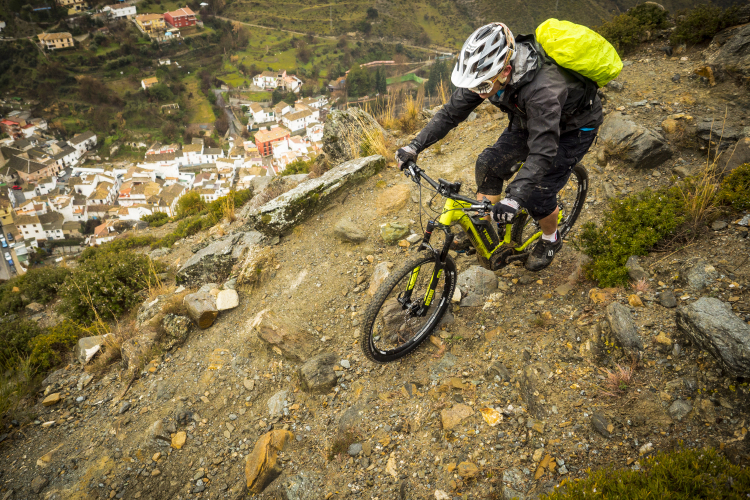
Our last thoughts then come to the limits of the Trek Ebike, there were one or two sections that were very technical and we had to really concentrate on. Enduro World Series level difficulty. We thought that in those sections the 120mm travel was limiting as was the head angle, to feel comfortable riding that type of trail difficulty all day. Yes we got through those sections, but rider skill played an important part. The weight of the bike meant in those situations piling through in a straight line tends to be the only option. That though is a risky riding technique and if it did go wrong we would probably find ourselves out of our depth. If the bikes were lighter we would be able to flick them about a bit more and adjust to the rough technical surface, however we can say that the stiffness and strength of the bike frame was obvious in these moments. A more open head angle and a longer travel front fork (140mm) would render our experience in these instances more enjoyable/less risky.
Compared To…
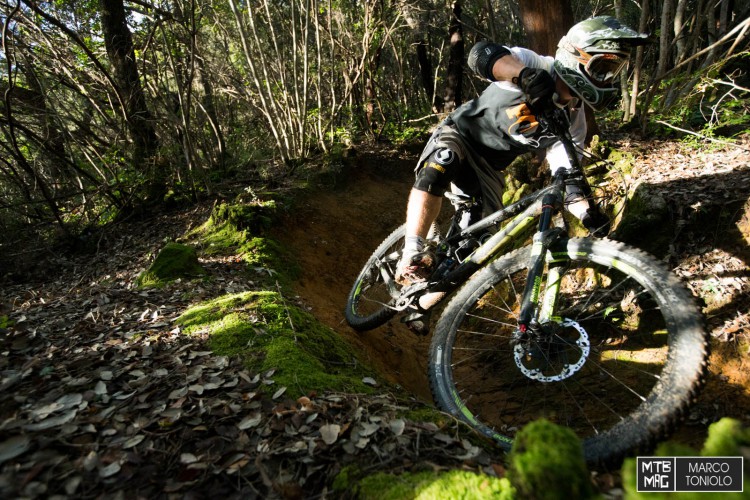
If we go back in time to a few months ago to Punta Ala and our 15 bike Enduro test the Trek Slash we tried came out as one of the top bikes. We certainly felt that elements of that bike and how it rode were taken over to the Ebike. They are not directly comparable ride wise as they are essentially aimed at two different uses but the quality of build and finish were obviously out of the same design studio.
The crux of the matter is that we think you can’t directly compare Ebikes with normal bikes. They do similar things but the power at low speed and weight change how they are ridden in the different environments, opening up new ways of riding certainly, maybe even a whole new race circuit that is Ebike based? The social elements of weaker riders keeping up with more seasoned riders came out significantly on our ride, especially keeping up when riding next to Rene Wildhaber was easy, he was on a non Ebike.
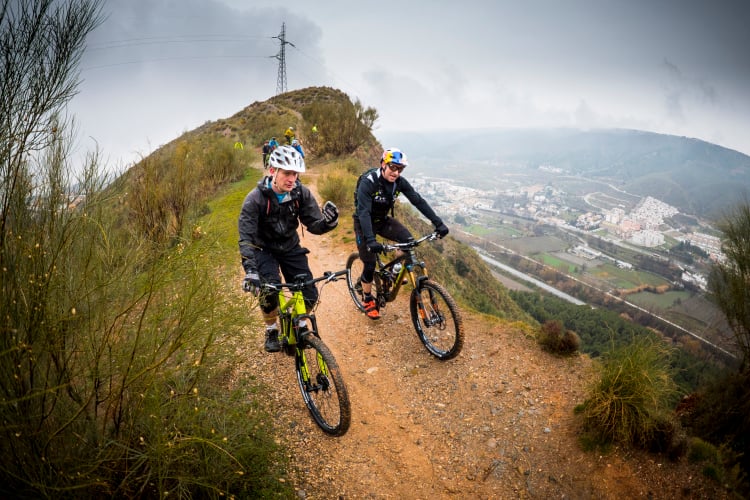
Points to Improve
With all new products there are always a few elements that can be improved upon. We felt that Trek have really hit the ground running and there were very few things that we could pick up on as negatives to this bike. Yes weight could go down, but really if we have 6 kilos of motor battery and frame strength to contend with, that’s not going to happen realistically within the design specifications that have been arrived at. Trek have taken a reliability approach rather than out and out weight loss as their aim which is certainly necessary with Ebikes, and direct comparison for a non Ebike weight should not really be made, only relative to other Ebikes.
The main element that we felt could be improved upon was mainly down to the fact that as an Ebike it has a motor on it, thus an extra control system is needed, plus a display to feed back information. This means that the bar gets quite crowded for our liking as a seasoned Enduro mountain biker searching for simplicity. The use of the SRAM 1×11, Shimano brakes and a Reverb were in our opinion brilliant, but the controller and screen from Bosch were basically not that low profile, they look expensive to replace and are probably not held on stock at every bike shop currently, so riding with caution is necessary if riding off road is the main aim, a lower profile display positioned slightly differently might be a good move from Bosch to develop.
This though brings us back to the point of what is this bike for? Extreme conditions? Or more gentle riding? Should Ebikes have their own ideal riding trails that might be different to what we are used to like DH bikes have? We chatted to Trek about this and they commented that the Bosch system is the best on the market right now for Ebikes, but due to the fact that Bosch is not a mountain bike company and despite Trek’s huge buying power, getting Bosch to adapt a control system just for Trek, to be more robust and fit more discreetly on the bar, is unlikely to happen soon. Ebikes are still in their youth phase of existence, yes it is weather proof, but we know from experience that resistance off road is important on parts like this. Are we being picky? Well maybe, but a crash replacement warranty from Bosch though on these parts could negate any fears about this. We, when riding did not experience any problems related to this but our experience from riding for many years off road meant it just sat in our minds a little. Looking back at bicycle part developments over time for example, shows how companies like Shimano created the shadow system, to reduce the vulnerabilities of rear gear systems, Bosch following a similar path is probably likely in time.
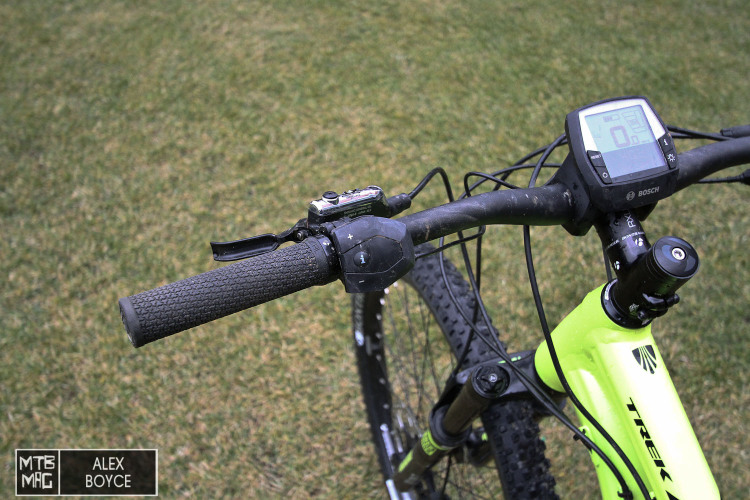
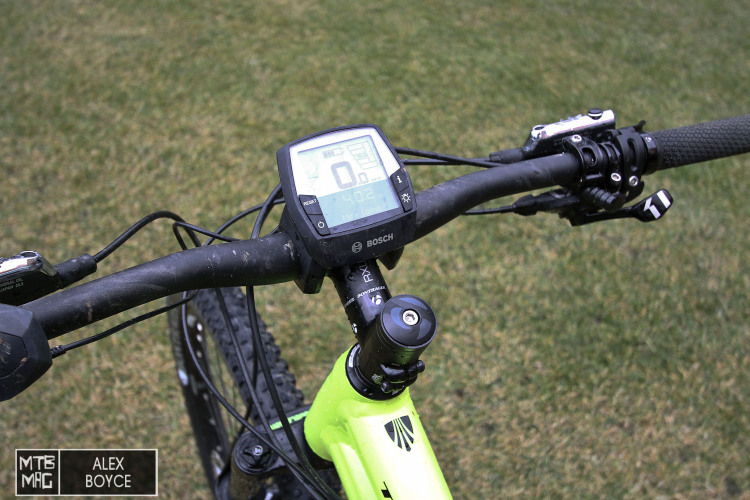
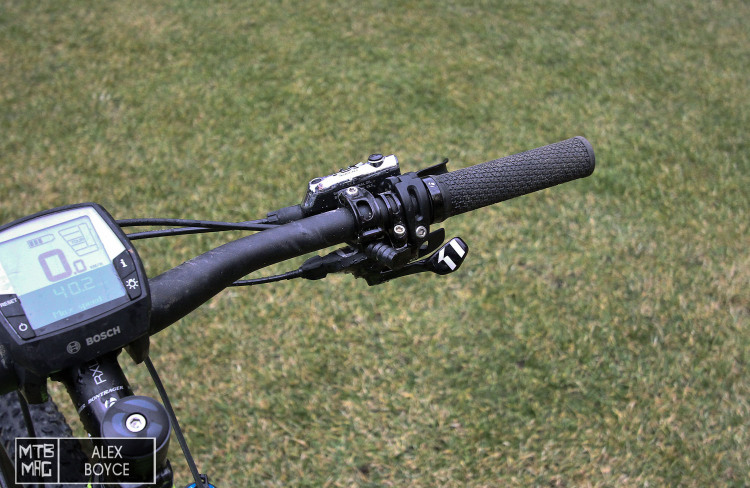
Conclusion
Trek have basically hit the mark well with their Powerfly FS9 Ebike when it comes to making an all round E mountain bike that can be ridden off road for fun. It is early days in the development of Ebikes, so it is not an easy market to predict or build bikes for. It seems that the main customer for this type of bike is probably not strictly defined yet. Ebikes definitely appeal to all types of rider, they level the playing field when it comes to fitness and where/how far one can go on a ride. Trek spoke of the SUV effect. We have to say we agree with them. The Powerfly FS9 is a mighty fine bike that can be ridden on and off road wonderfully if you don’t want to push the limits. The fact that Trek chose to enter the Ebike market at this time with an 120mm bike means that they are aiming at a customer who is not going to be pushing the limits. Their likely customer wants a fun comfortable bike to ride with the ability to go off road in the woods or mountains, explore and generally have a fun in a low risk manner. For that this Ebike really is ideal and based on our first impressions. It does set the standard very high for the competition, especially with bike handling with the low centre of gravity, component choices and overall ride-ability. Nothing better than powering up a steep hill and not even really sweating once you are at the top. We would like to try the Ebike experience further to see how long-term an Ebike like this fits into our riding and also how beginners without preconceived ideas might take to this bike.

